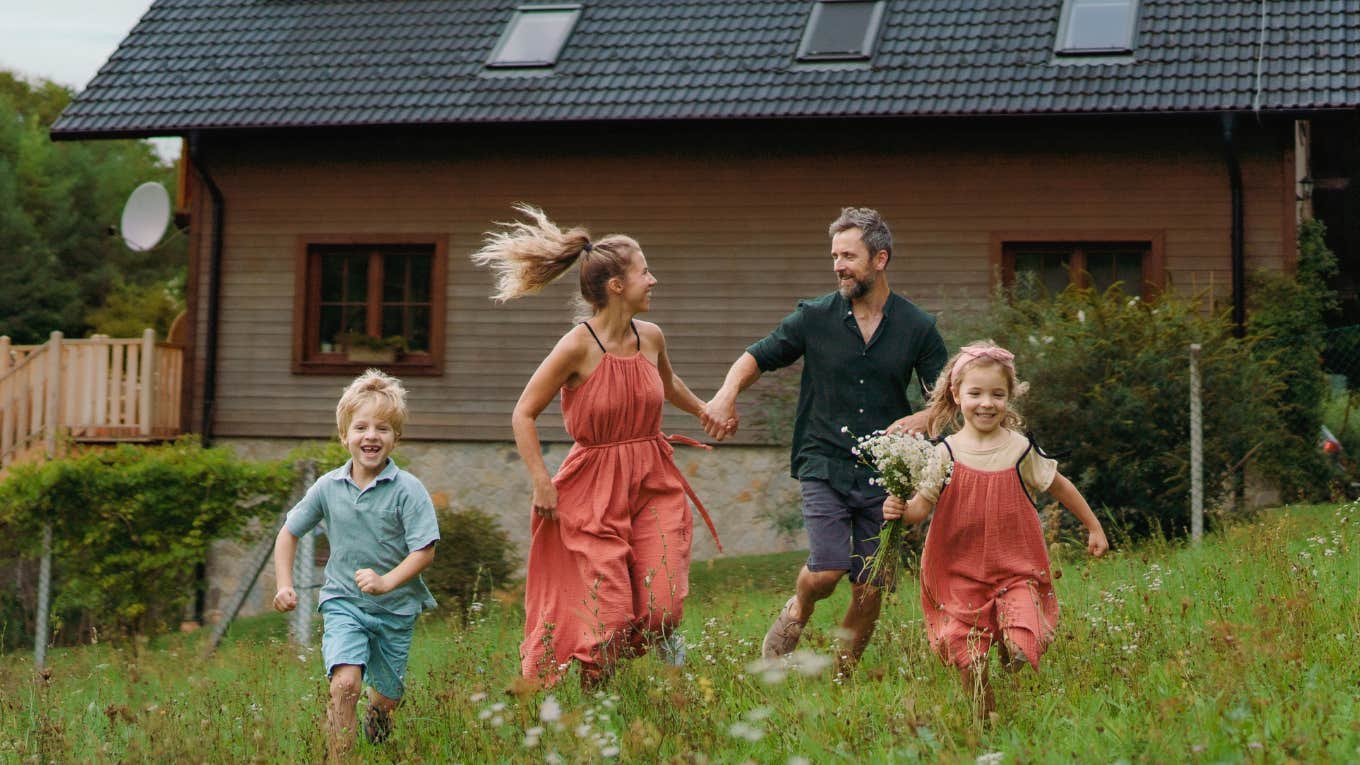People Who Live In A Household Of This Many People Are Usually The Happiest, According To Research
The key to happiness may be closer than you think.
 Halfpoint | Shutterstock
Halfpoint | Shutterstock The World Happiness Report began in 2012 and since then has had 80 installments. They take data from over 140 countries to discover insight into happiness. When it comes to the overall happiest people in the world, Finland currently tops the happiness ranking, followed by Denmark and Iceland. The United States is 24th on the list, making it the lowest level of happiness that Americans have ever reported.
Their 2025 report was unique, however, in that it explored elements of family and household size and how those factors relate to happiness. Based on their findings, they were actually able to determine that the happiest households have a very specific number of inhabitants.
The happiest people live with a specific number of housemates.
The people we live with can have a great impact on us. We see them every day, we grow close, and they can often be a major source of support whether they are family or friends. "In particular, family bonds promote lasting relationships, and households provide a context where these bonds develop and, in many cases, thrive," according to the World Happiness Report.
Often, living alone can be considered better than living with others, even though this comes at extra expense. Living alone can be seen as more "adult" or a sign of success. This world view, however, does not take interpersonal relationships into consideration. These relationships are an important source of well-being and are easily fostered by sharing the same home with people close to you.
 sturti | Canva Pro
sturti | Canva Pro
In fact, an over 80-year Harvard study found that "Close relationships, more than money or fame, are what keep people happy throughout their lives."
“The surprising finding is that our relationships and how happy we are in our relationships have a powerful influence on our health,” said Robert Waldinger, director of the study and psychiatrist at Massachusetts General Hospital. “Taking care of your body is important, but tending to your relationships is a form of self-care too. That, I think, is the revelation.”
A household with 4 members has the highest happiness levels
According to the World Happiness Report, "A household size of about four members is predictive of higher happiness levels. People in these households enjoy abundant and very satisfactory relationships."
So why is 4 the magic number? "We hypothesize that a small number of household members may limit affective connections, which negatively impacts happiness, while a large number of members may impose economic burdens that also threaten wellbeing," according to the findings.
To put it simply, too many people in one household increases stress and financial burdens, and too few people in a household or living alone impacts an overall sense of connectedness and increases feelings of loneliness.
"In Colombia, the heads of households, spouses in two-parent households, and especially those who are married, work, and have medium-sized families (four persons), report the highest levels of happiness," noted the World Happiness Report. Latin American societies often have larger household sizes and a strong focus on the family. This can lead to greater happiness.
“A household of four or five often comes with a built-in network of emotional and practical support,” said Spencer James, a professor in the School of Family Life at Brigham Young University. “While it can be busy, many hands can share responsibilities, lighten each other’s load, and foster a sense of team spirit.”
The average household size is decreasing.
According to the World Happiness Report, the average size of households has decreased by approximately 0.5 persons per decade. This does not come as a surprise, as the number of children a typical family has is half of what it used to be (4.84 in 1950 to 2.23 in 2021).
The number of couples in the United States without children (25%) has now surpassed the number of couples with children (24%). According to the U.S. Census, Utah has the largest average household size of 2.99 people.
It's important to note that the Happiness Report specifically mentioned that they did not factor in households without familial relationships — meaning they did not include adults living with roommates as part of the research, but it's important to acknowledge that these platonic bonds can be equally as important in determining happiness.
 Konstantin Postumitenko | Canva Pro
Konstantin Postumitenko | Canva Pro
In a personal essay for Business Insider, Jamie Bradley, a self-described millennial, admitted that after living alone, she made the choice to go back to roommates for her personal happiness. She wrote, "After living by myself for a year, I found it to be quite a lonely experience. Sure, I could spill ice cream on my pajamas and keep wearing them for three days without judgment, and everything was right where I left it, but I found it hard coming home to total silence." She confessed, "Sitting by myself on my plush sofa — big enough for a family of four — I started wondering if the dream I'd been sold was a big fat lie. I worked hard, made the money, got my own place, and now I felt cripplingly isolated."
There is so much joy in sharing space with others. And now, thanks to the World Happiness Report, we have the research to back it up. As Bradley explained after making the choice to share her home with a roommate, "My feelings of loneliness and isolation were gone instantly upon moving in. I am now met with 'good morning' notes next to cups of hot tea and hugs after I get home from work."
Alexis Faible is a writer with a Bachelor's in fashion design and a Master's in journalism covering fashion, relationships, and human-interest stories.
